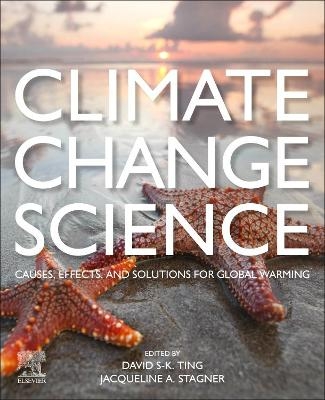
Climate Change Science
Elsevier Science Publishing Co Inc (Verlag)
978-0-12-823767-0 (ISBN)
The book provides academics, postgraduate students and other readers in the fields of environmental science, climate change, atmospheric sciences and engineering with the information they need for their roles. Through exploring the fundamental information currently available, exergy utilization, large-scale solutions, and current solutions in place, the book is an invaluable look into how climate change can be addressed from an engineering-perspective using scientific models and calculations.
David S-K. Ting is a professor in the Department of Mechanical, Automotive and Materials Engineering at the University of Windsor, Canada. Professor Ting supervises students mainly in the Renewable Energy and Thermofluid areas. He studied combustion, turbulence, heat transfer, and fluid-structure interactions prior to joining the University of Windsor. Dr. Ting founded the Turbulence and Energy Laboratory at University of Windsor in 2011. To date, he has co-supervised more than 75 graduate students, co-authored more than 130 journal papers, authored three textbooks, and co-edited seven books. Jacqueline A. Stagner is the Engineering Undergraduate Programs Coordinator at the University of Windsor, Canada. Dr. Stagner is an adjunct faculty member in the Department of Mechanical, Automotive and Materials Engineering, where she advises students in the Turbulence and Energy Laboratory. She holds a PhD in Materials Science and Engineering, a Master of Business Administration, and a bachelor’s degree in Mechanical Engineering. She also worked as a release engineer in the automotive industry for six years. Dr. Stagner has co-edited two books.
1. Engineering for climate change
2. Pros and cons of climate change
3. Man-made versus natural causes
4. Population, urbanization and climate change
5. Alternate view, dynamics of self-adjusting earth
6. The climate change equation, y = f(x1, x2, x3, …)
7. When will exergy be exhausted?
8. The second law of thermodynamics and climate change
9. What is the threshold for doomsday?
10. Is carbon dioxide an accurate measure?
11. Large-scale solutions
12. Low-risk mitigations
13. Deep sea and climate change
| Erscheinungsdatum | 02.06.2021 |
|---|---|
| Sprache | englisch |
| Maße | 191 x 235 mm |
| Gewicht | 570 g |
| Themenwelt | Naturwissenschaften ► Biologie ► Ökologie / Naturschutz |
| Naturwissenschaften ► Physik / Astronomie ► Angewandte Physik | |
| ISBN-10 | 0-12-823767-8 / 0128237678 |
| ISBN-13 | 978-0-12-823767-0 / 9780128237670 |
| Zustand | Neuware |
| Haben Sie eine Frage zum Produkt? |
aus dem Bereich


